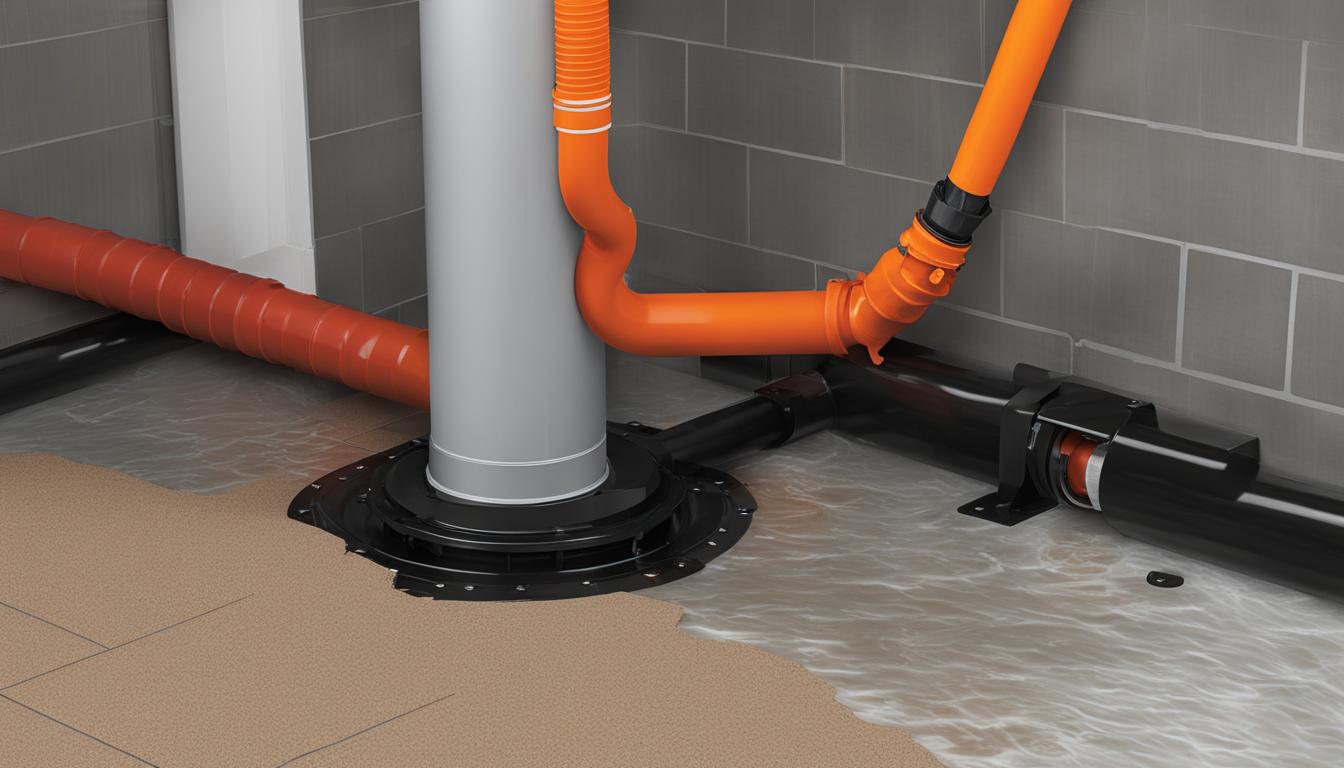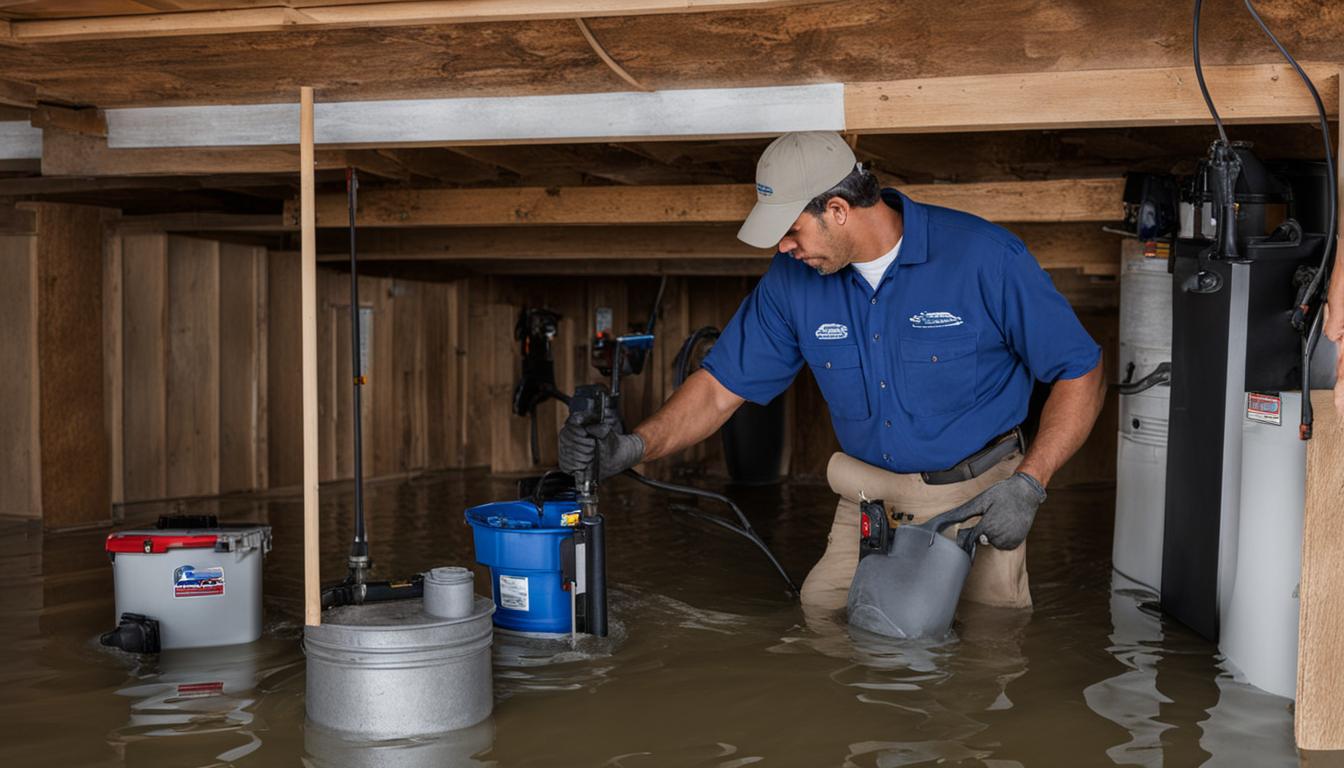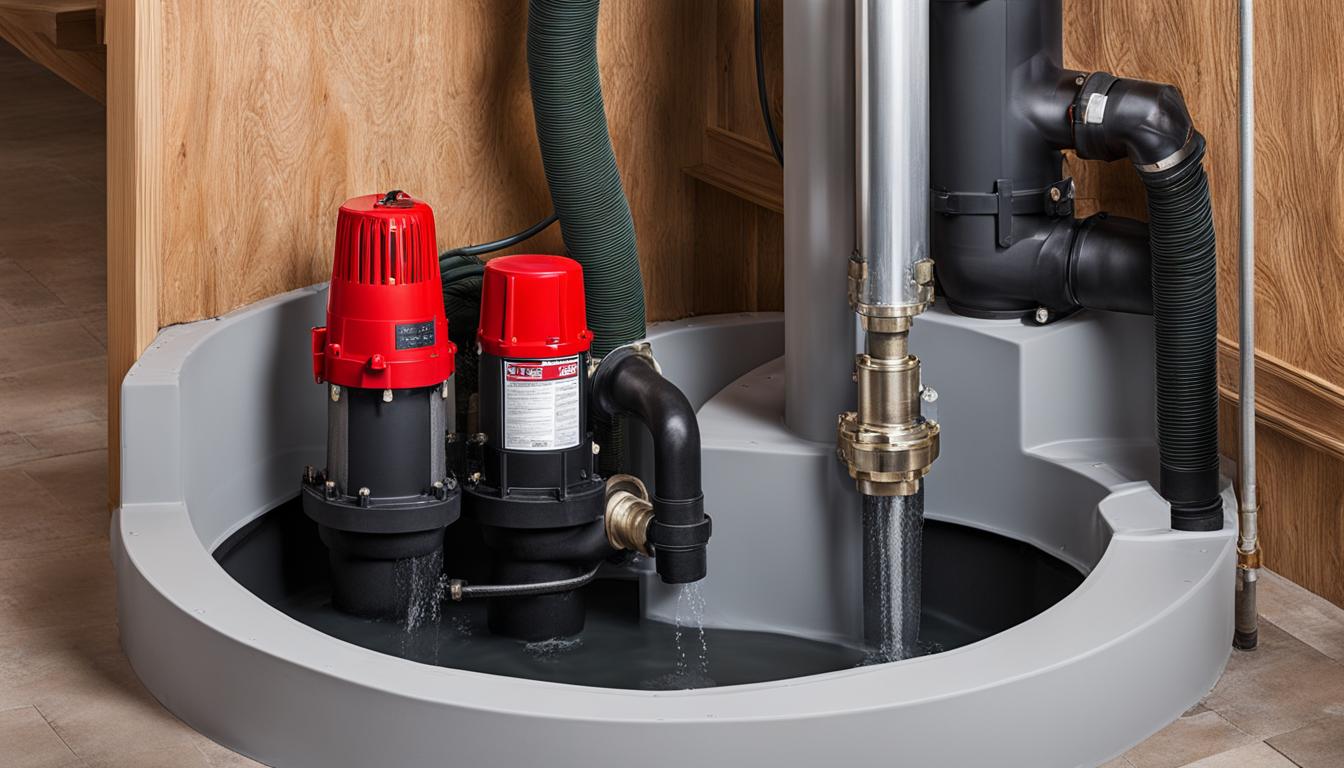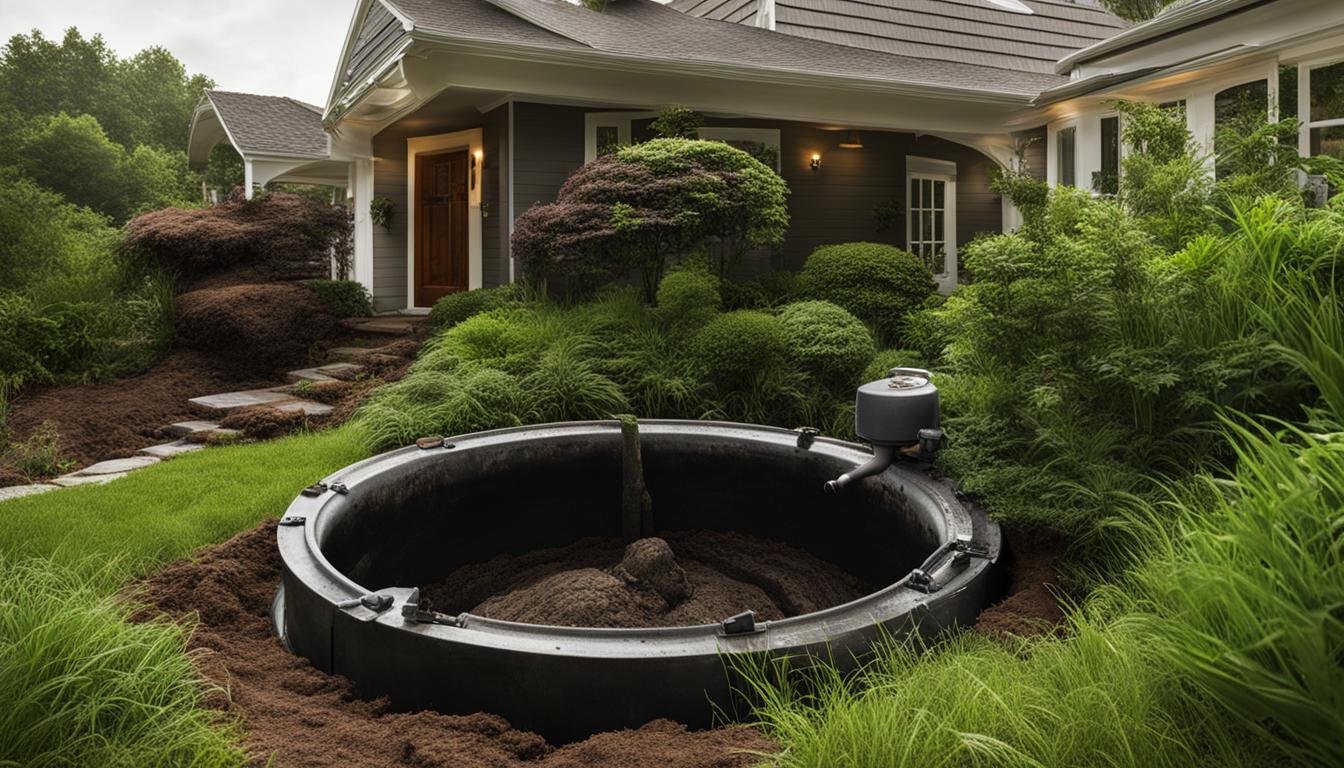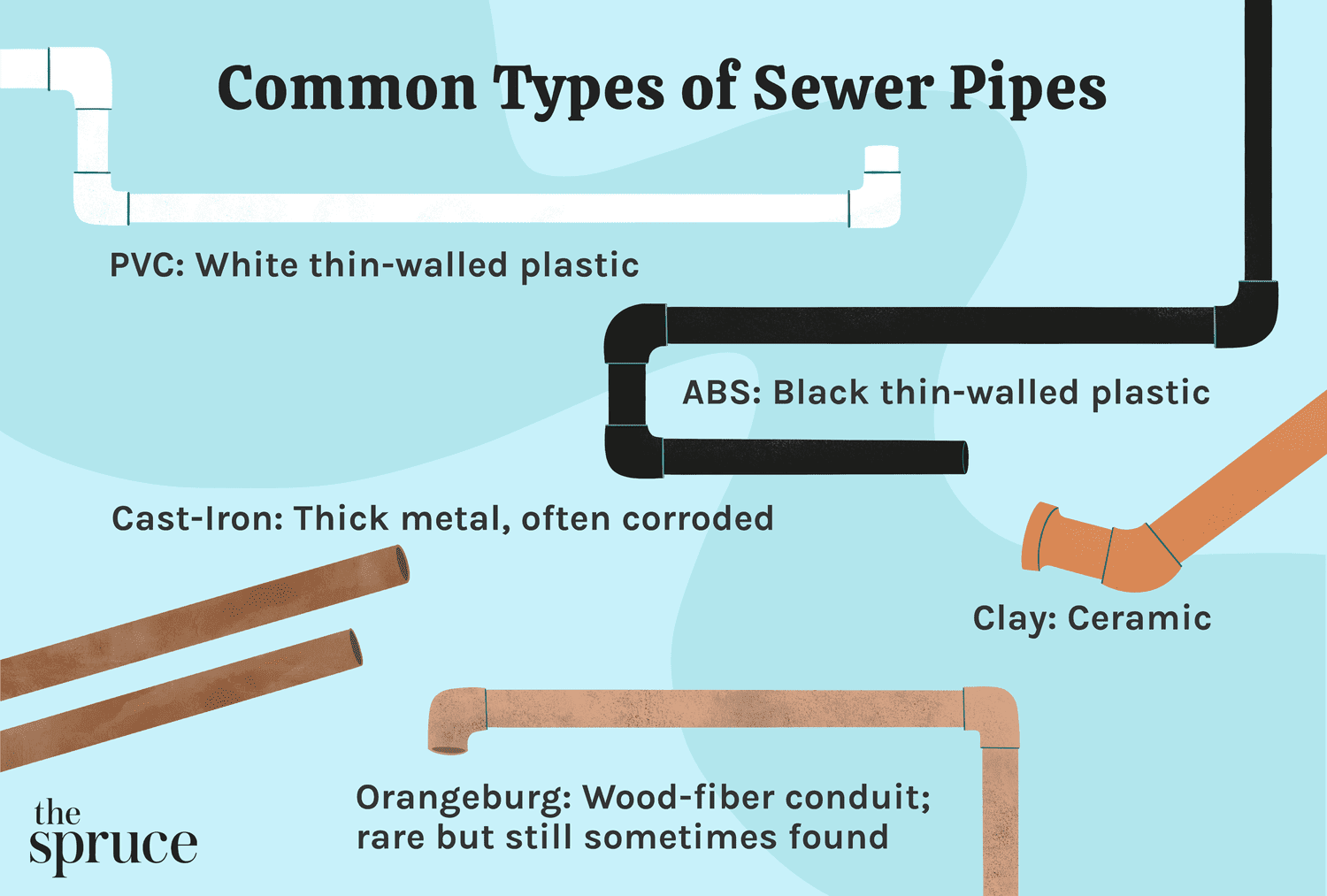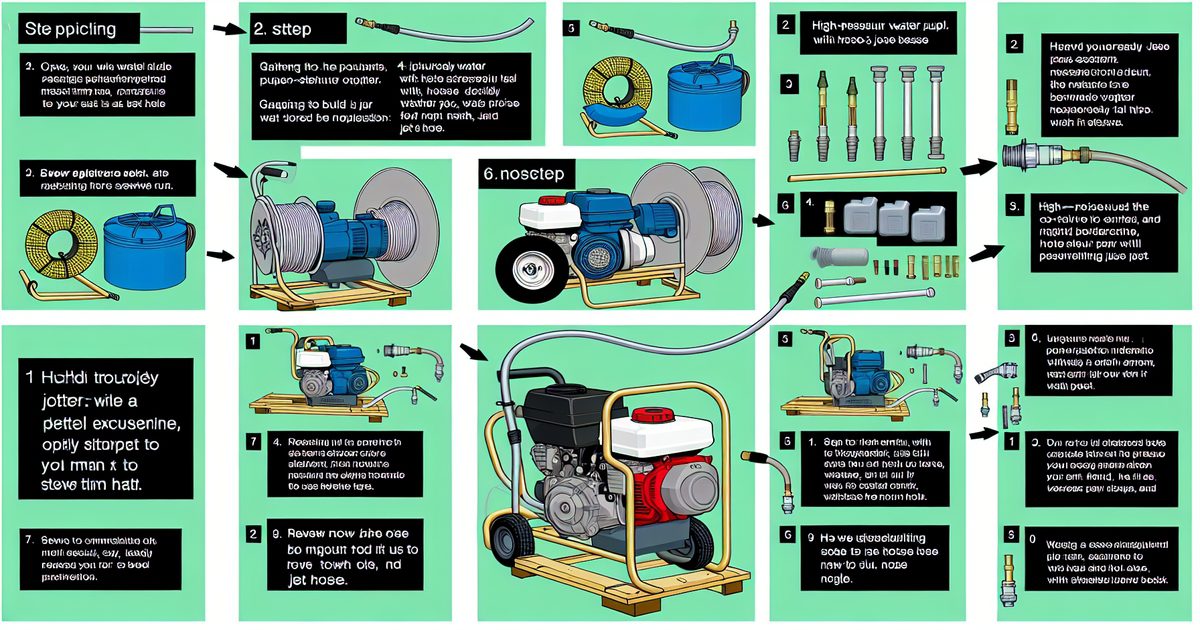Welcome to our article on the role of sump pump discharge piping in effective water management. As homeowners, we understand the importance of protecting our homes from water damage. Sump pump discharge piping plays a crucial role in redirecting water away from our homes and preventing potential floods. In this section, we will discuss why proper installation and best practices are essential for successful water management. Let’s dive in.
Key Takeaways:
- Sump pump discharge piping is crucial in effectively managing water and preventing potential water damage.
- Proper installation and best practices are essential for successful water management.
- Efficient water management can protect your home from costly flood damage.
- Understanding discharge piping materials and optimizing water flow efficiency can enhance the effectiveness of your system.
- By following the guidelines and best practices outlined in this article, homeowners can ensure a reliable and efficient sump pump discharge system.
Understanding the Importance of Discharge Piping
When it comes to effective water management, sump pump discharge piping plays a crucial role in preventing floods and ensuring optimal drainage. A properly installed and maintained piping system can efficiently redirect water away from your home, preventing potential water damage and maintaining a dry basement.
Flood prevention:
Without a reliable discharge piping system, your basement and home are at risk of flooding during heavy rainstorms or melting snow. The right piping system can effectively transport water away from your home and prevent such disasters.
Drainage efficiency is a key factor in ensuring that your sump pump is operating at peak performance. A well-designed and properly installed piping system will ensure that water is transported away from your home as quickly and efficiently as possible.
One important consideration when it comes to discharge piping is the distance and routing of the pipe away from your home. A longer distance may require a larger diameter pipe to maintain proper water flow, while factors such as elevation and potential obstacles along the route will impact the efficiency of the system.
| Tip: | Always plan out the routing of your discharge pipe before installation and consider all potential obstacles and challenges that may impact the efficiency of your water management system. |
|---|
Another key factor in optimizing water flow efficiency is the use of check valves. These valves prevent water from flowing back into the sump pit after the pump has shut off, ensuring that the pump doesn’t have to work harder than necessary and prolonging its lifespan.
Drainage efficiency:
By optimizing water flow and efficiency through your discharge piping system, your sump pump will operate with greater efficiency overall, reducing the risk of breakdowns and extending the life of the pump.
Choosing the right piping material is also crucial for effective water management and flood prevention. PVC piping is a popular choice due to its affordability and durability, while corrugated piping is more flexible and can be easier to install.
- When selecting a piping material, consider your specific needs and the requirements of your water management system, including factors such as the type of pump you have, the distance of the discharge and placement of the discharge.
- Consult with a professional if you are unsure which material is best for your needs.
By understanding the importance of discharge piping and taking steps to optimize its efficiency, you can ensure that your home is protected from potential water damage and that your sump pump will operate at peak performance for years to come.
Installation Guide for Sump Pump Discharge Piping
Proper installation of sump pump discharge piping is crucial for effective water management. Here, we provide a comprehensive guide to follow:
Piping Material
Before beginning installation, it is essential to select the appropriate piping material. Common materials include PVC, ABS, and polyethylene. PVC is the most commonly used material for sump pump discharge piping due to its durability and easy-to-install nature. ABS is another popular option that offers high-temperature resistance and is less prone to cracking. Polyethylene is a cost-effective choice, but it may not be suitable for high-temperature environments.
Installation Steps
The following steps should be followed for sump pump discharge piping installation:
- Choose the best location for the sump pump discharge outlet. It should be at least 10 feet away from the foundation and away from your neighbor’s property.
- Measure the distance from the sump pump to the discharge outlet and cut the piping material to the appropriate length.
- Attach the piping material to the sump pump outlet using a rubber coupling and secure it with a stainless-steel clamp.
- Follow the guidelines of your local code to determine whether the piping needs to be buried or aboveground. For aboveground installation, secure the piping material to the exterior of your home using durable brackets.
- Install a check valve in the piping material to prevent backflow of water into the sump pump. Place the valve in a vertical position and ensure that the arrow on the valve is pointing outward to indicate proper flow direction.
- Attach the piping material to the discharge outlet. If the outlet is aboveground, use a splash block to redirect water away from your home’s foundation.
Common Mistakes to Avoid
When installing sump pump discharge piping, several common mistakes should be avoided:
- Avoid using fittings that restrict water flow. Use smooth elbows and curves to ensure optimal water flow efficiency.
- Ensure that the piping material is securely fastened to the wall or other fixtures to prevent sagging or improper slope.
- Do not use flexible hoses as they can easily become clogged and are prone to leaks. Use rigid piping materials instead.
- Ensure that the piping material is of sufficient diameter. A pipe diameter of at least 1.5 inches is recommended for optimal water flow efficiency.
- Do not use indoor drainage systems for outdoor sump pump discharge outlets as they are not designed to withstand outdoor conditions.
By following these installation guidelines and avoiding common mistakes, homeowners can ensure the proper installation of their sump pump discharge piping for effective water management.
Planning Your Discharge Pipe Routing
Proper routing of your sump pump discharge piping is crucial for ensuring effective water management and preventing potential water damage. By carefully planning the routing of your discharge pipe, you can effectively redirect water away from your home and prevent flooding. Here are some factors to consider when planning your discharge pipe routing:
- Distance: The further away from your home you can redirect water, the better. Try to aim for at least 10 feet away from your home, but check local regulations for any specific requirements.
- Elevation: Ensure that the discharge pipe slopes away from your home and towards the chosen outlet. A slope of at least 1/8 inch per foot is recommended.
- Obstacles: Be aware of any potential obstacles that may hinder the effectiveness of your discharge pipe, such as trees, shrubs, or landscaping features. Ensure there is a clear and unobstructed path for the water to flow.
- Discharge outlet: Choose an appropriate outlet for the water to be discharged, such as a storm drain or dry well. Check local regulations for any specific requirements.
- System planning: Consider the overall layout and design of your water management system, including any secondary pumps or battery backups. Ensure that the discharge pipe routing is compatible with the entire system.
By following these guidelines and carefully planning the routing of your discharge pipe, you can effectively manage water and protect your home from potential water damage.
Optimizing Water Flow Efficiency
Proper water flow is critical to the effectiveness of a sump pump discharge piping system. In this section, we will discuss strategies for optimizing water flow efficiency to ensure efficient drainage and prevent potential water damage.
Choosing the Right Pipe Diameter
The diameter of your discharge pipe affects the amount of water that can flow through it. A larger diameter pipe can handle more water flow, reducing the risk of clogs and backups. However, it’s essential to balance the desired flow rate with the size of the sump pump and the available space for the piping system.
As a general rule of thumb, a 1.5-inch diameter pipe is sufficient for most small to medium-sized homes, while larger homes may need a 2-inch diameter pipe. It’s important to consult a professional to ensure that you select the right pipe diameter for your specific needs.
Ensuring Proper Pipe Slope
The slope of your discharge pipe affects how quickly water flows through it. The pipe should have a downward slope, allowing water to move efficiently away from the home. For every ten feet of horizontal pipe, there should be a drop of at least 1/8 inch to ensure proper slope.
It’s essential to ensure that the slope is consistent throughout the piping system, including any horizontal sections. Any dips or sagging in the pipe can cause backups and reduce the efficiency of the system.
Using Check Valves
Check valves are essential components of a sump pump discharge piping system. They prevent water from flowing back into the sump pump and allow water to flow in only one direction.
Properly placed check valves can significantly improve water flow efficiency by reducing the amount of water that needs to be pumped out in subsequent cycles. Check valves should be installed at every change in direction in the pipe and at the point where the pipe exits the home.
Conclusion
By implementing these strategies, homeowners can optimize water flow efficiency within their sump pump discharge piping system. Proper pipe diameter, slope, and the use of check valves can significantly improve drainage efficiency and reduce the risk of water damage. It’s crucial to consult with a professional to ensure that your specific needs are met and that the system is installed correctly.
Outdoor Discharge Considerations
When considering outdoor discharge for your sump pump, there are several important factors to keep in mind. Proper planning and installation can ensure that your system is effective in preventing floods and protecting your home from water damage.
Complying with Local Regulations
Before beginning any outdoor discharge project, it is crucial to research and comply with local regulations. Many municipalities have specific requirements for the distance that discharge pipes must be placed from structures and property lines, as well as restrictions on where water can be discharged.
Be sure to check with your local government to ensure that your system meets all necessary regulations and guidelines.
System Planning
When planning your outdoor discharge system, there are several key considerations to keep in mind. These include:
- The slope of your yard
- The location of other structures, such as sheds or garages
- The distance between the discharge point and any nearby bodies of water
- The type of soil in your yard, as well as its moisture content
It is important to take into account any potential obstacles that may impact the effectiveness of your system. For example, a tree root may cause a pipe to become clogged or damaged over time.
Choosing the Right Pipe Material
When selecting piping material for outdoor discharge, it is important to choose a durable material that can withstand the elements. PVC and corrugated plastic piping are commonly used materials for outdoor discharge systems.
Be sure to choose a pipe diameter that is appropriate for your sump pump and the amount of water it will be discharging. A larger diameter pipe will allow for greater water flow, but may be more expensive and difficult to install.
Best Practices for Installation
Proper installation is crucial for ensuring that your outdoor discharge system is effective in managing water. Here are some best practices to follow:
- Install piping at a downward slope, with a minimum slope of 1/8 inch per foot, to prevent water from backing up into your sump pump.
- Use a check valve to prevent water from flowing back into the sump pump.
- Place the discharge point in an area where water can safely flow away from your home and any neighboring properties.
- Bury the piping at least 5 inches underground to protect it from damage and prevent it from becoming a tripping hazard.
“Proper installation is crucial for ensuring that your outdoor discharge system is effective in managing water.”
By following these best practices, you can ensure that your outdoor discharge system is properly installed and able to effectively manage water and prevent potential flood damage.
Choosing the Right Piping Material for Effective Flood Prevention
When it comes to choosing the right piping material for your sump pump discharge system, there are several factors to consider. One of the most critical factors is flood prevention. A reliable piping material can help ensure that your home is protected from water damage in case of heavy rainfall, snowmelt, or other water-related emergencies.
There are several types of piping materials available in the market, each with its own advantages and disadvantages. The most common materials include PVC, CPVC, ABS, and polyethylene. Let’s take a closer look at each of them.
| Piping Material | Advantages | Disadvantages |
|---|---|---|
| PVC | – Affordable – Lightweight – Easy to install – Resistant to corrosion and UV rays |
– Can crack under extreme cold – May become brittle over time – Not suitable for high-temperature water |
| CPVC | – More durable than PVC – Can handle high-temperature water – Good resistance to chemicals and corrosion |
– More expensive than PVC – Requires special fittings and solvent cement for installation – May become brittle over time |
| ABS | – Lightweight – Durable – Good resistance to chemicals and impact – Can handle low-temperature water |
– Not suitable for hot water – Can melt under high temperatures – More expensive than PVC |
| Polyethylene | – Highly flexible and durable – Resistant to impact and corrosion |
– More expensive than PVC and ABS – Can sag under the weight of water – Not as widely available |
The piping material that’s right for you depends on your unique needs and circumstances. For most homeowners, PVC is a convenient and reliable option for sump pump discharge piping. It’s affordable, easy to install, and resistant to corrosion and UV rays.
However, if you need to handle high-temperature water or chemicals, CPVC may be a better option. If you’re concerned about impact or low-temperature water, ABS may be more suitable. For more specific needs, polyethylene may be a better choice.
Ultimately, the most important thing is to choose a piping material that can effectively prevent floods and protect your home from water damage. Consider the advantages and disadvantages of each option, and consult with a professional if you’re uncertain about which material is best for your needs.
Maintaining Your Discharge Piping System
Regular maintenance of your sump pump discharge piping system is crucial for ensuring optimal water management. By following a few simple steps, you can avoid potential problems and ensure that your system is operating at peak efficiency.
Inspection
Regular inspections of your discharge piping system can help identify any potential issues before they become major problems. Check for signs of wear and tear such as cracks, leaks, or rust. Ensure that all connections are secure and that the pipe is properly anchored to prevent movement.
Cleaning
Over time, debris and sediment can accumulate in your discharge piping system, leading to clogs and reduced efficiency. Regular cleaning can help prevent these issues. Use a plumbing snake to remove any clogs or buildup in the pipe, and flush the system with water to ensure that all debris is removed.
Troubleshooting
If you experience issues with your sump pump discharge piping system, it is important to troubleshoot the problem as soon as possible. Common issues include clogs, leaks, and pump malfunctions. Use a plumbing snake or plunger to clear any clogs, and inspect the system for any signs of leaks or damage. If you are unable to identify and resolve the issue, contact a professional plumber for assistance.
Maintenance Schedule
To ensure that your discharge piping system is in optimal condition, it is recommended to follow a regular maintenance schedule. This can include quarterly inspections and cleaning, as well as an annual checkup by a professional plumber. Creating a maintenance schedule and sticking to it can help prevent potential problems and ensure that your system is reliable and effective.
Enhancing System Efficiency with Backup Solutions
When it comes to protecting your home from flooding and water damage, having a reliable sump pump discharge piping system is essential. However, even the most well-designed and maintained system can fail due to power outages, mechanical malfunctions, or other unforeseen circumstances. That’s why it’s important to consider incorporating backup solutions into your system.
Backup solutions can provide an extra layer of protection for your home, ensuring that water is effectively redirected away from your foundation even in the event of a primary system failure. The following are some common backup solutions to consider:
| Backup Solution | Benefits |
|---|---|
| Battery Backup | Provides power to the sump pump in case of power outages |
| Water-Powered Backup | Uses water pressure from the main water supply to power the sump pump |
| Secondary Pump | Installs a secondary pump that kicks in if the primary pump fails |
While backup solutions can add to the cost of your water management system, they are well worth the investment when it comes to protecting your home from costly water damage. Consider the unique needs of your home and the potential risks in your area when selecting the appropriate backup solution for your sump pump discharge piping system.
At [Company Name], we can help you assess your water management needs and recommend the best backup solutions for your home’s unique situation. Contact us today to learn more about how we can help protect your home from flooding and water damage.
Addressing Common Challenges and Troubleshooting
Despite proper installation and maintenance, homeowners may encounter challenges with their sump pump discharge piping system. By understanding common issues and troubleshooting techniques, you can address problems quickly and effectively.
Clogs
Clogs can occur when debris or sediment accumulates in the piping system, impeding water flow. Clearing the clog may require removing the discharge pipe and flushing it out with a high-pressure hose or manually removing the blockage with a plumbing snake. To prevent clogs, consider installing a filter or screen at the sump pump end of the piping system.
Leaks
Leaks in the discharge piping system can lead to water damage and reduced efficiency. Inspect the pipes for cracks or loose connections and replace or tighten them as necessary. Applying waterproof tape or epoxy putty to small cracks can provide a temporary fix until a replacement pipe is installed.
Pump Malfunctions
If your sump pump is not turning on or is not pumping water effectively, it may be experiencing a malfunction. First, check that the pump is plugged in and that the circuit breaker has not tripped. If both of these are in order, inspect the pump itself for damage or wear and tear. Consider consulting a professional if you are unsure how to proceed with pump repair or replacement.
Unusual Noises
If your sump pump or discharge piping system is making strange noises, such as gurgling or grinding, it could indicate an issue with air in the system or a malfunctioning pump. Consult a professional to diagnose the problem and make repairs as necessary.
By addressing common challenges and being proactive with maintenance and troubleshooting, you can ensure that your sump pump discharge piping system functions effectively and prevents potential water damage to your home.
Expanding Your Knowledge on Water Management
At this point, we have covered the crucial role of sump pump discharge piping in effective water management and provided a comprehensive guide to installation, maintenance, and troubleshooting. However, it’s important for homeowners to understand that efficient water management extends beyond just sump pumps and discharge piping.
One aspect of water management that is often overlooked is flood prevention. Floods can cause significant damage to homes and can be difficult and expensive to repair. Understanding how to prevent floods and mitigate their impact is an essential part of effective water management.
Homeowners can take several steps to prevent floods, including:
- Ensuring proper grading around the home to direct water away from the foundation
- Cleaning gutters and downspouts regularly to prevent blockages
- Installing flood barriers or waterproofing materials in areas prone to flooding
- Monitoring water levels in nearby bodies of water and being prepared to evacuate if necessary
Another key aspect of water management is conservation. Water is a precious resource that is essential for life, and it’s important that we use it wisely. Homeowners can conserve water by:
- Fixing leaks as soon as they are detected
- Installing low-flow showerheads and faucets
- Using drought-resistant landscaping
- Collecting rainwater for use in watering plants and gardens
By expanding your understanding of water management, you can take a holistic approach to protecting your home and the environment. There are many resources available online and through local government agencies that can provide additional information and guidance on effective water management practices.
Conclusion
Effective water management is crucial for protecting your home from potential water damage, and sump pump discharge piping plays a critical role in this process. By ensuring proper installation, regularly maintaining your system, and optimizing water flow efficiency, you can significantly reduce the risk of floods and other water-related issues.
We highly recommend following the guidelines and best practices outlined in this article to ensure a reliable and efficient sump pump discharge system. Additionally, we encourage homeowners to expand their knowledge on water management practices and explore additional resources on the topic.
Remember that incorporating backup solutions and addressing common challenges and issues can further enhance the resilience and effectiveness of your water management system. By taking a proactive approach towards managing water, you can protect your home and give yourself peace of mind.
FAQ
What is the role of sump pump discharge piping in water management?
Sump pump discharge piping plays a crucial role in effectively managing water by redirecting it away from your home’s foundation and preventing potential flooding or water damage.
Why is discharge piping important for flood prevention?
Discharge piping is important for flood prevention because it ensures efficient drainage by redirecting water away from your property. It helps to prevent water from accumulating and causing potential damage.
What is the best material for sump pump discharge piping?
The best material for sump pump discharge piping depends on various factors, such as the local regulations, budget, and the specific needs of your home. Common options include PVC, ABS, and corrugated plastic.
How should I plan the routing of my discharge pipe?
When planning the routing of your discharge pipe, consider factors such as the distance to the desired outlet, elevation changes, and potential obstacles. It is important to ensure that the water flows away from your home without any hindrances.
How can I optimize water flow efficiency in my discharge piping system?
To optimize water flow efficiency, consider factors such as the pipe diameter, slope, and the use of check valves. A larger diameter pipe, proper slope, and the inclusion of check valves can help maximize the effectiveness of your sump pump system.
What should I consider for outdoor discharge?
When considering outdoor discharge for your sump pump, it is important to comply with local regulations, avoid directing water towards neighboring properties, and ensure that the water is properly dispersed to prevent any potential issues.
What are the advantages and disadvantages of different types of piping materials?
The advantages and disadvantages of different types of piping materials vary. PVC is durable and cost-effective but can become brittle in extreme cold temperatures. ABS is also durable and resistant to chemicals, but it may be more expensive. Corrugated plastic is flexible and easy to install but may not be as durable as other materials.
How do I maintain my discharge piping system?
Regular maintenance of your discharge piping system is important. Inspect the pipes for clogs, leaks, or damage. Clean any debris or sediment that may hinder water flow. Troubleshoot common issues such as clogs or pump malfunctions to ensure optimal water management.
How can backup solutions enhance the effectiveness of my sump pump system?
Incorporating backup solutions such as battery backups or secondary pumps can enhance the resilience of your sump pump system. These backup options provide additional protection in the event of a power outage or primary pump failure, ensuring continuous water management.
What are some common challenges and troubleshooting tips for sump pump discharge piping systems?
Common challenges with sump pump discharge piping systems include clogs, leaks, and pump malfunctions. To troubleshoot these issues, check for clogs or obstructions in the pipes, inspect for any leaks or damage, and ensure that the pump is operating correctly.
Where can I find additional resources on water management?
To expand your knowledge on water management, you can explore resources such as government websites, industry publications, and professional organizations. These sources provide valuable information on various aspects of water management, including sump pump systems, drainage, and flooding prevention.
